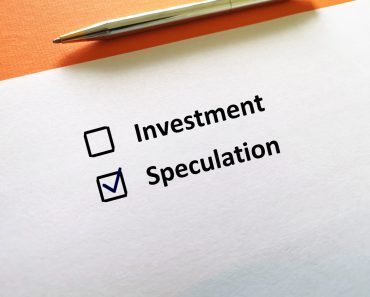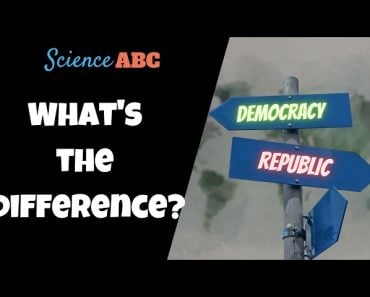Table of Contents (click to expand)
How does information asymmetry impact secondhand markets, and what measures can be taken to mitigate it? The Lemon vs. Peach Analogy in economics can help explain this nuanced topic.
In today’s market, we have plenty of options, be it new or secondhand purchases. Choices imply options, which also means the burden of making the right choice—often a daunting task.
Making the right choice often gets precarious in the secondhand market, primarily because the seller of a secondhand good will always have more information than the buyer of the goods they intend to sell. The price the seller is offering may not always signify the quality it suggests, as many not-so-visible variables influence its price.
Consider used cars. Variables like the owner’s driving style, the terrain the car was driven on, and maintenance history are just some factors to remember. Any variable that cannot be inspected by a mechanic, but can influence the vehicle’s selling price, is often kept hidden or lied about.

In contrast, if you buy a product as a new purchase, the seller must adhere to quality standards. There are several checks in place by various regulatory bodies before a new product reaches the shelves. A seller is authorized to sell that product only when he passes through various regulatory channels and attains a license.
In both markets, the seller is trying to obtain the best price for his product, but the price can be arbitrarily decided in the secondhand market. The seller can pass off low-quality goods as high-quality ones.
Recommended Video for you:
How Does The Lemon Vs. Peach Analogy Apply To This Market?
George Akerlof, a renowned macroeconomist and a Nobel laureate, wrote a seminal paper titled, ‘The Market for Lemons: Quality Uncertainty and the Market Mechanism” in 1970. Akerlof, Joseph Stiglitz, and Michael Spence received a Nobel Prize for their research on the impact of asymmetric information on markets. The paper explores the implications of asymmetric information, which is imperfect information among market agents. It explains the idea using the example of the market for used cars, but its findings have been applied to various other markets.
Akerlof’s paper adopts the analogy of the lemons (low-quality used goods) market to demonstrate how peaches (high-quality used goods) are driven out. Any buyer in the secondhand market is unaware of the right price based on the product usage. Consequently, the buyers are willing only to pay a price that is an average of the cost of a high-quality used good and a significantly low-quality used version of the same good, which is the rational thing to do, as there are many not-so-visible variables.

Only a secondhand seller knows if they hold a lemon or a peach. A market tends to be flooded with lemons, because if a seller holds a peach, they won’t get a favorable price by listing their product. Hence, the only product that would prevail in the market would be of inferior quality. As more and more sellers of peaches are driven out, the average price that a buyer is willing to pay also drops. Therefore, the market will be flooded with lemons, i.e., low-quality goods.
The above tendency prevails due to information asymmetry in the market, wherein the seller has more information about the product than the buyer, since they know the intensity of its usage. This leads to an adverse selection of goods among buyers. Consequently, high-quality goods are driven out of the market.
In conclusion, the buyer, on the one hand, always assumes the goods to be of average quality and decides their purchasing power; sellers are of two types. The first type can pass off low-quality goods as high-quality ones, while the second type consists of those sellers who have high-quality goods but cannot sell their goods at the existing price and are driven out of the market, thereby driving out above-average quality used goods.
This can create situations where markets do not exist for certain types of goods where quality cannot be ascertained. It is also a laborious task to have quality checks in place, as that could create loopholes that a supplier can leverage.
How To Tell A Lemon From A Peach?
This problem is defined as adverse selection by economists. Put simply, it is the consequence of insufficient or incomplete information in the market, as the seller chooses to dispense information to the buyer selectively. This problem is not limited to the used goods market. It can also be used to explain the lack of sufficient formal credit institutions in developing countries. In some cases, lemons may not drive out peaches, but co-exist instead!

Governments, therefore, play a critical role in setting up laws and regulations to disclose more information to buyers. Be it financial markets, goods markets or the secondhand goods market, regulation plays a critical role in reducing the extent of the problem. Countries like the US have also passed legislation on this issue across states called the Lemon Laws.
Offering warranties and guarantees on the product sold, online ratings and reviews, and third-party inspections are some of the ways in which buyers can determine a lemon from a peach. But don’t forget, these additional checks come with their own costs as well!
Conclusion
An informed seller and an uninformed buyer create instances of information asymmetry in the market. This is not limited to the used goods market. It is prevalent even in new purchases. The old adage of “buyers beware” holds true even today. Mechanisms such as customer review inspection certificates are some ways to minimize the risk of making a wrong selection. In many situations, even cultural and social factors help a buyer make the right choice, primarily due to its acceptance grounded on authenticity. Mitigation, however, may never happen, as humans would seek to profit from any transaction and increase their surplus in cases where the buyer appears to be naïve.
References (click to expand)
- Writing the “The Market for'Lemons'”: A Personal ....
- Akerlof, G. A. (1970, August). The Market for "Lemons": Quality Uncertainty and the Market Mechanism. The Quarterly Journal of Economics. Oxford University Press (OUP).
- Giannakas, K., & Fulton, M. (2020, December 14). On the market for “Lemons”: quality provision in markets with asymmetric information. Humanities and Social Sciences Communications. Springer Science and Business Media LLC.











